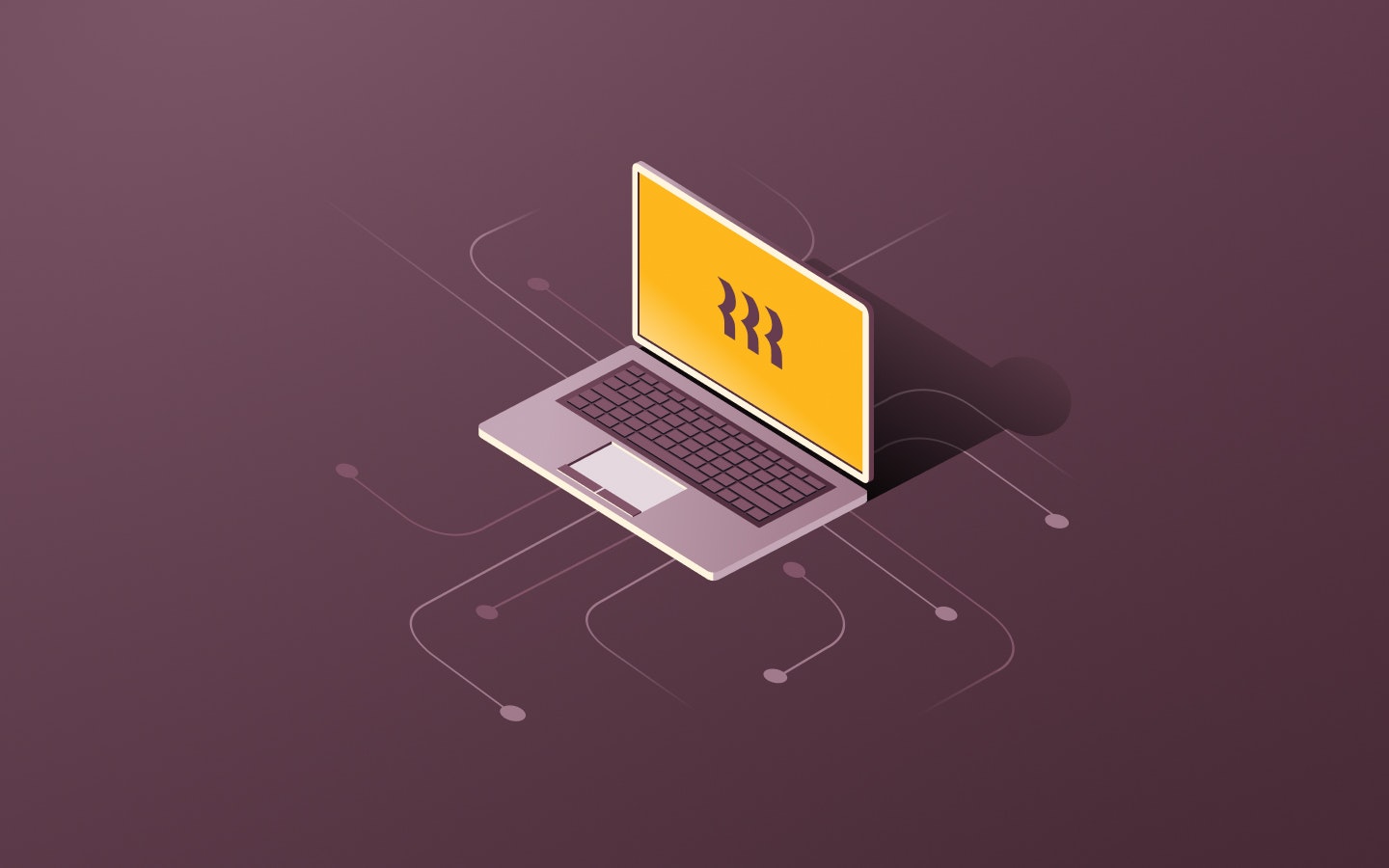10 best employee management software for your company

Running a business involves more than just providing products or services—it also requires managing people and operations effectively. As your company grows, keeping track of employee records, payroll, benefits, and performance becomes increasingly complex. At the same time, ensuring the security and compliance of sensitive employee data becomes a top priority. That's where employee management software comes in handy.
These tools streamline processes, automate tedious tasks, and provide valuable insights into workforce productivity and engagement. They also help to facilitate communication among team members, track key metrics and OKRs, and support employee development.
This can be incredibly helpful for both HR teams and managers looking to efficiently manage their workforce, including remote teams without compromising on data security. This article explores the best employee management software in the market.
We’ll look at their features, pros and cons, costs, and what you should consider when choosing one that best fits your needs. Let’s dive in.
The 10 best employee management systems & software
With so many employee management systems on the market, it can be hard to know where to start. We've narrowed it down to the ten best options to help you make an informed choice.
Rippling
Rippling brings HR, IT, and finance together in one unified system. It allows businesses to easily manage and automate employee processes from onboarding to offboarding, with features like payroll, benefits, device management, app provisioning and more.
Key features of Rippling
- Rippling provides a single source of truth for all employee data, with powerful analytics, custom reporting, and granular permissions.
- Global payroll enables companies to pay employees and contractors across the world in minutes, with automatic compliance and local tax filings.
- Integrated time tracking, PTO tracking, and attendance management sync seamlessly with payroll.
- App and device management makes it easy to securely provision, deprovision and manage employee access to 600+ apps as well as company devices.
- An integrated applicant tracking system and recruiting platform streamlines hiring across the organization.
Pros
Cons
Easy to use interface
Implementation and training can take time
Automation saves time on manual processes
Pricing structure can get tricky though it offers better customization options
Offers advanced reporting capabilities
Responsive customer support
Paycor
Paycor is a human resources and payroll platform that empowers leaders to streamline people management processes. It provides a unified HR solution with a single source of truth for employee data, allowing businesses to automate administrative tasks, ensure compliance, and gain valuable insights.
Key features of Paycor
- Full-suite HCM with integrated modules for payroll, HR, time tracking, benefits, recruiting, etc.
- Analytics and reporting capabilities to provide actionable insights into key workforce metrics
- Powerful automation and workflows to eliminate manual processes and improve efficiency
- Self-service portal for employees to access their information, request time off and view paystubs
Pros
Cons
Comprehensive all-in-one HR and payroll platform
Lack of basic reporting functionality
Ease of use and intuitive navigation
Inconsistent customer support experience
Smooth payroll management
Slow response times for complex issues
Paylocity
Paylocity is a cloud-based, all-in-one HR and payroll platform designed to simplify workforce management for small and mid-sized organizations. It provides an extensive suite of tools to automate core HR tasks, drive employee engagement, and improve efficiency across payroll, benefits, talent management, time tracking, etc.
Key features of Paylocity
- Unified HR and payroll in a single solution
- Robust compliance dashboard to manage key HR requirements
- Flexible employee self-service to empower staff with mobile access to HR tasks
- Integrated time tracking with geofencing and scheduling
Pros
Cons
Intuitive interface for admins and employees
Limited automations and integrations
Customizable to match business needs
Lacks comprehensive inter-module reporting
Helpful ATS and time and attendance feature
Challenging implementation process
BambooHR
BambooHR is an affordable, user-friendly HR management platform designed to streamline and automate core HR processes for small to medium-sized businesses. It offers a centralized employee database, hiring and onboarding tools, time tracking, and employee performance management features to help organizations efficiently manage their workforce.
Key features of BambooHR
- Applicant tracking system to streamline hiring and improve candidate experience when bringing on new employees
- Automated employee onboarding with customizable templates and e-signature capabilities
- Time tracking and PTO management with easy mobile access for employees
- Performance management with goal setting, assessments and feedback tools
Pros
Cons
Intuitive interface for admins and employees
Limited automations and integrations
Customizable to match business needs
Lacks comprehensive inter-module reporting
Helpful ATS and time and attendance feature
Challenging implementation process
ADP
ADP is a cloud-based HCM suite designed to streamline HR processes for mid-sized businesses. It provides a single database that unifies HR, payroll, time tracking, talent management and benefits, allowing organizations to manage their workforce, ensure compliance and drive employee engagement.
Key features of ADP
- End-to-end payroll processing with tax filing, direct deposit, global capabilities and mobile access
- Talent suite with recruiting, onboarding, performance reviews, compensation and succession planning
- Time and attendance tracking with employee scheduling, automated workflows and real-time analytics
- Customizable reporting with benchmarking powered by ADP DataCloud's big data insights
Pros
Cons
Comprehensive all-in-one HR and payroll platform
Lack of basic reporting functionality
Ease of use and intuitive navigation
Inconsistent customer support experience
Smooth payroll management
Slow response times for complex issues
Workday
Workday is a cloud-based human capital management solution that unifies HR, talent management, payroll and time tracking into a single system. With a focus on user experience, Workday leverages AI and machine learning to deliver personalized, engaging experiences for employees while providing robust analytics and reporting capabilities for HR leaders.
Key features of Workday
- Global workforce management with flexible organizational structures and automated compliance
- Talent optimization via a skills-based talent marketplace that aligns workers with internal opportunities
- Augmented analytics that provide data-driven workforce insights through intuitive dashboards and reports
- Employee experience features like personalized onboarding journeys, employee surveys, and a social collaboration hub
Pros
Cons
Artificial intelligence helps optimize talent management
Some features lack depth and customization options
Streamlined management of time-off requests, work hours, and timesheets
Pricing can be a bit steep compared to some competitors
Intuitive, user-friendly interface for employees and managers
Learning curve for administrators
Justworks
Justworks is a professional employer organization (PEO) that provides small and medium-sized businesses with a user-friendly, customizable platform to manage payroll, benefits, HR, and compliance.
Key features of Justworks
- Automated payroll processing, tax filings, and W-2/1099 forms
- Access to health insurance, 401(k), and other employee benefits
- HR tools for onboarding, PTO management, and document storage
- Compliance support, including workers' compensation and unemployment insurance
Pros
Cons
Simplifies HR and payroll tasks for small businesses
Limited scalability for larger enterprises
Good selection of benefits for a PEO
Lacks global payroll, IT, and finance solutions
Enables international hiring and contractor payments
Limited integration options in certain areas
UKG
UKG provides a full suite of HR, payroll, talent, time, and employee management solutions designed to help organizations manage their people more efficiently. Its two main products are UKG Pro for larger enterprise organizations and UKG Ready for small to mid-sized businesses.
Key features of UKG
- AI-powered recommendations and insights to optimize workforce decisions
- Flexible scheduling tools to ensure coverage while accommodating employee preferences
- Succession and career development planning to nurture top talent
- Ability to manage global payroll across 160+ countries in a single system
Pros
Cons
Simplifies HR and payroll tasks for small businesses
Limited scalability for larger enterprises
Good selection of benefits for a PEO
Lacks global payroll, IT, and finance solutions
Enables international hiring and contractor payments
Limited integration options in certain areas
Paycom
Paycom is a payroll and HR software solution that helps businesses of all sizes manage the employee lifecycle from hire to retire. Its single-database system includes robust features for payroll, HR, talent acquisition, time and labor management, and more.
Key features of Paycom
- Employee self-service to empower staff to manage their own data
- Payroll processing and tax compliance management
- Talent acquisition tools for recruiting, hiring and onboarding
- Time tracking with physical time clocks, web and mobile apps
Pros
Cons
Simplifies HR and payroll tasks for small businesses
Limited scalability for larger enterprises
Good selection of benefits for a PEO
Lacks global payroll, IT, and finance solutions
Enables international hiring and contractor payments
Limited integration options in certain areas
Gusto
Gusto is a payroll, benefits, and HR platform designed to simplify and automate processes for small to medium-sized businesses. It offers an intuitive interface, robust features, and excellent customer support to help companies manage their workforce more efficiently.
Key features of Gusto
- Full-service payroll with automatic tax calculations and filings
- Employee self-onboarding and document management
- Health insurance and financial benefits administration
- PTO tracking and time-off requests
- Workforce costing reports and customizable insights
Pros
Coms
Gusto ensures smooth payroll process
Pricing is on the high side for businesses with fewer employees
Built-in compliance support for payroll taxes and filings
Some users report issues with incorrect tax filings or payments
Integrates with popular accounting, time tracking and expense software
Benefits administration has room for improvement in support and customization
How to choose the perfect employee management system for your company
Selecting the right employee management system requires careful consideration of your organization's specific needs and goals. Here are some key features to consider:
Payroll and compensation management
An effective payroll software should handle more than just distributing paychecks. It should manage tax calculations and process overtime and bonuses. Look for a system that can scale with your company, especially if you're planning international expansion. Such a system should be capable of handling multiple currencies and complying with different countries' tax regulations. Integrations with external accounting tools like QuickBooks are also a plus.
Performance management
A robust employee management system should include tools for setting goals, providing feedback, and tracking employee progress. This can include features like customizable performance review templates, 360-degree feedback capabilities, and the ability to set and monitor individual and team goals.
Attendance and time off
Efficient attendance and time-off management streamlines operations and improves employee satisfaction. A good system allows employees to request time off and clock in and out easily, potentially via mobile devices. It should also provide analytics to help managers identify trends, such as excessive overtime in certain departments or patterns in absenteeism.
Natively built
Your employee management software should be natively built from the ground up on a single source of truth for employee data. Platforms consisting of siloed modules cobbled together through acquisitions often require manually re-entering data across systems, risking errors and inefficiencies. A natively built platform with all the key HR functions you need enables smooth automation of processes, streamlined workflows, and time savings across the entire employee lifecycle.
Benefits administration
Managing health insurance, retirement plans, and other benefits can be complex. Quality employee management software simplifies this process by allowing employees to compare and select their benefits packages. It should also help HR professionals manage open enrollment periods and ensure compliance with relevant regulations.
Employee management software costs
The cost of employee management software varies significantly based on the features and complexity of the system. Businesses with small teams or fewer employees can expect to pay from $4 to $15 per employee per month, while those for larger enterprises can cost up to $100 and more.
Generally, more feature-rich systems command higher prices. A simple system handling only payroll and time tracking will be less expensive than one that also manages performance reviews, recruitment, and provides detailed analytics.
However, it's important to consider the total cost of ownership. While a single, comprehensive solution might have a higher upfront cost, it can be more cost-effective than piecing together multiple systems. The costs of integrating, maintaining, and managing several disparate solutions can quickly add up, offsetting any initial savings.
Many providers offer tiered service levels, allowing companies to start with a basic package and upgrade features or add-ons as they grow. Some may charge additional fees for setup or premium features. When evaluating costs, consider the potential return on investment. A more expensive system might ultimately save money by increasing HR efficiency or reducing payroll errors.
Rippling merits particular attention in this context. Pricing starts at $8 per month per user, which covers essential features like a unified workforce directory, workflow automation, and onboarding and offboarding tools. Rippling's modular pricing model allows businesses to select and pay for the services they need, providing flexibility for companies to scale their HR technology as they grow.
Streamline workforce management with Rippling
Rippling stands out as a comprehensive workforce management solution, natively built from the ground up to integrate key capabilities across HR, IT, and finance into a single platform. Its strength lies in its ability to automate and streamline the entire employee lifecycle, from hiring to offboarding, across multiple departments.
One of Rippling's key advantages is that it's built on a single source of truth for employee data. This means all the applications and modules within Rippling inherently work together seamlessly. At the same time, Rippling can also connect with over 600+ third-party apps, allowing businesses to manage employee data, payroll, benefits, and IT systems in one place without needing to fully replace their existing systems. This eliminates the need for disconnected platforms, reduces the potential for errors from manually transferring data, and enables powerful automation spanning the entire employee lifecycle.
Frequently asked questions
What is an employee management system?
An employee management system (EMS) is a software platform that helps organizations efficiently manage their workforce. It streamlines and automates key HR processes like hiring, onboarding, time tracking, performance reviews, and benefits administration. An EMS provides a centralized database to securely store and access important employee information.
What are the benefits of employee management software?
Employee management software can save time and reduce errors by ensuring core HR functions like onboarding new hires, tracking time and attendance, and managing leave requests are handled consistently and efficiently. The software gives managers a clear overview of their team's activities and helps them make informed decisions about staffing and workloads. Additionally, self-service access makes it easier for employees to view their own information, request time off, and communicate with their managers.
What other staff management tools are important for managers to use?
In addition to an employee management system, other helpful tools for managers include applicant tracking systems for recruiting, learning management systems for employee training, and succession planning software to develop talent pipelines. Project management and collaboration platforms like Slack are also valuable for overseeing work, assigning tasks, and keeping teams on the same page.
Schedule a demo with Rippling IT today
This blog is based on information available to Rippling as of July 11th, 2024.
Disclaimer: Rippling and its affiliates do not provide tax, accounting, or legal advice. This material has been prepared for informational purposes only, and is not intended to provide or be relied on for tax, accounting, or legal advice. You should consult your own tax, accounting, and legal advisors before engaging in any related activities or transactions.











